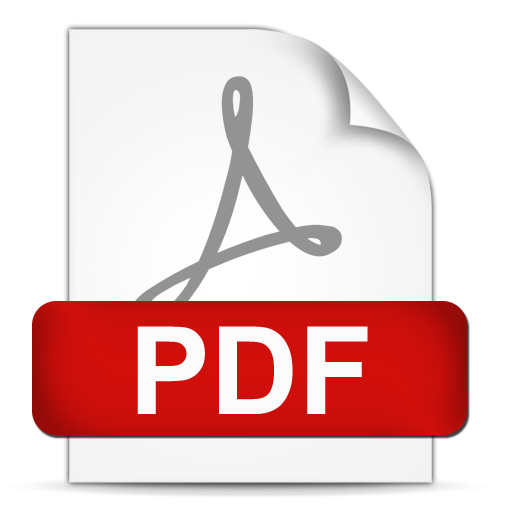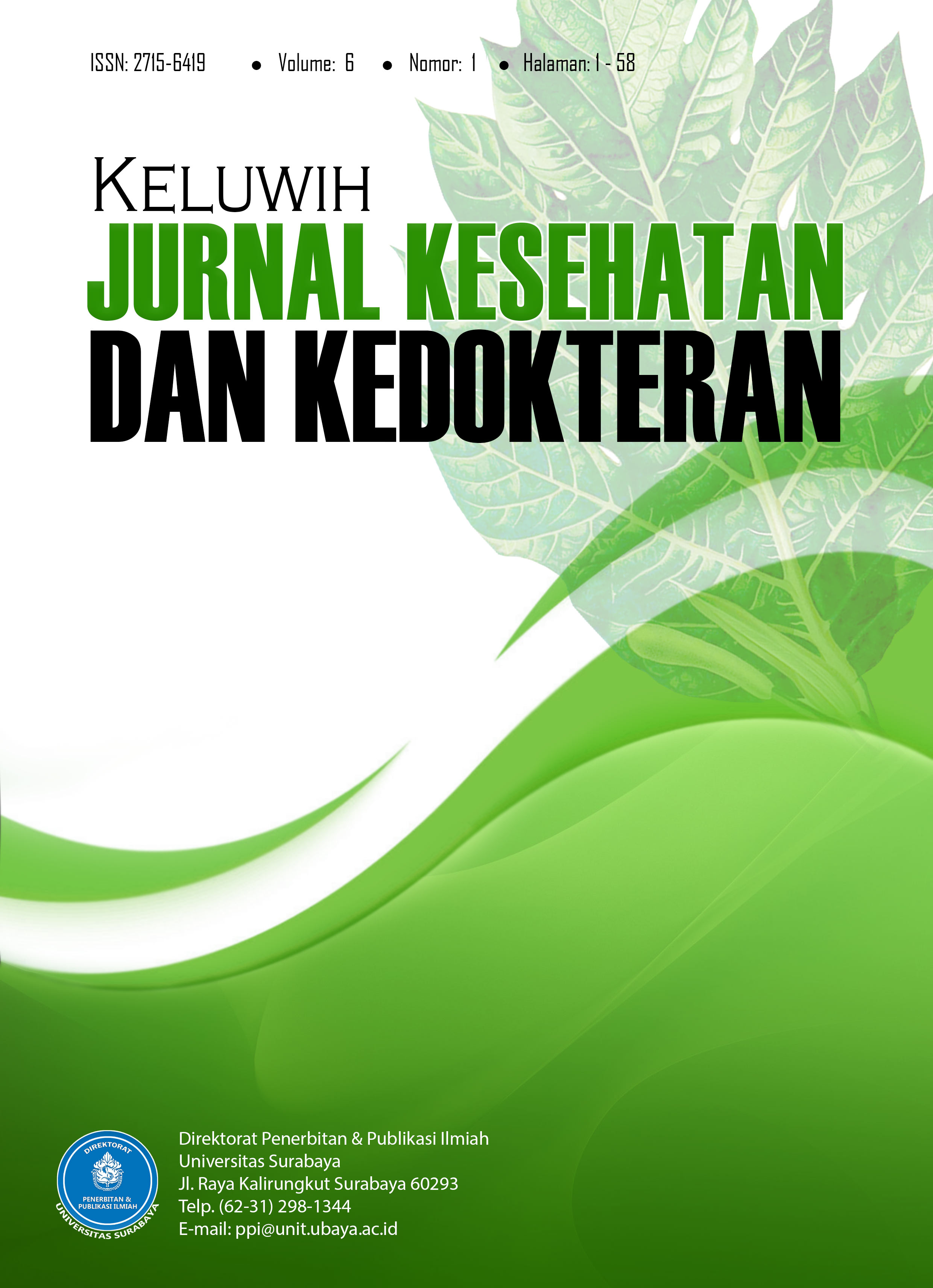Curcuminoid Compounds Inhibit Macrophage Migration Inhibitory Factor: In Silico Study for Their Association to Anti-diabetic Potency
 Abstract Views:
410 times
Abstract Views:
410 times
 PDF Downloads:
253 times
PDF Downloads:
253 times
Abstract
Abstract—Diabetes mellitus is a health problem characterized by chronic inflammation causing complications in the cardiovascular, kidneys, eyes, and nervous system, with macrophage migration inhibitory factor (MIF) protein playing a crucial function in the inflammatory process chain. MIF has been known as a signaling protein involved in the development of type 1 and type 2 diabetes mellitus (DM). There are several studies indicating that the development of type 1 and type 2 DM is influenced by the accumulation of macrophages in tissues susceptible to diabetic injury or infection. Curcuminoids, the bioactive components in turmeric, are known for their ability to decrease inflammation. This in silico study is intended to analyze the potential anti-inflammatory effect of curcuminoid in DM, with a specific focus on how it may reduce proinflammatory signals through MIF. The investigation involved predicting physicochemical, pharmacokinetic and toxicity (ADMET) qualities for curcuminoids, followed by molecular docking simulations with MIF as the target protein. The ADMET results showed curcumin and bisdemethoxycurcumin had favorable properties, while dimethoxycurcumin exhibited undesirable traits like low VDss. Therefore, molecular docking simulations were performed using curcumin and bisdemethoxycurcumin as ligands. The molecular docking simulations indicated that curcumin has a negative binding affinity slightly lower than (S, R)-3-(4-hydroxyphenyl)-4,5-dihydro-5-isoxazole acetic acid methyl ester (ISO-1), a reference MIF inhibitor; and bisdemethoxycurcumin binds to MIF even stronger than ISO-1, with interacting MIF amino acids Lys 32, Ile 64 Asn 97, Pro 1, and Tyr 95. Hence, the curcumin and bisdemethoxycurcumin compounds were found as having the potential to inhibit MIF activity that is associated with the progression of DM.
Keywords: curcuminoids, diabetes melitus (dm), inflammation, mif inhibitors, molecular docking
Abstrak—Diabetes mellitus (DM) merupakan masalah kesehatan yang ditandai dengan peradangan kronis, yang dapat menyebabkan komplikasi pada sistem kardiovaskular, ginjal, mata, dan sistem saraf. Protein macrophage migration inhibitory factor (MIF) memiliki peran penting dalam proses peradangan. MIF diketahui sebagai protein pensinyalan yang terlibat dalam perkembangan DM tipe 1 dan tipe 2. Beberapa penelitian menunjukkan bahwa perkembangan DM tipe 1 dan tipe 2 dipengaruhi oleh akumulasi makrofag pada jaringan yang rentan terhadap cedera atau infeksi akibat diabetes. Kurkuminoid, komponen bioaktif dalam kunyit, dikenal memiliki kemampuan untuk meringankan peradangan. Studi in silico ini bertujuan untuk menganalisis potensi efek antiinflamasi kurkuminoid terhadap DM, dengan fokus pada kemampuannya dalam menurunkan sinyal proinflamasi melalui MIF. Studi ini mencakup prediksi sifat fisikokimia, farmakokinetik, dan toksisitas (ADMET) kurkuminoid, yang dilanjutkan dengan simulasi molecular docking menggunakan MIF sebagai protein target. Hasil analisis ADMET menunjukkan bahwa kurkumin dan bisdemetoksikurkumin memiliki sifat yang menguntungkan, sedangkan dimetoksikurkumin menunjukkan karakteristik yang kurang diinginkan, seperti volume distribusi (VDss) yang rendah. Oleh karena itu, simulasi molecular docking dilakukan dengan menggunakan kurkumin dan bisdemetoksikurkumin sebagai ligan. Hasil simulasi molecular docking menunjukkan bahwa kurkumin memiliki afinitas pengikatan yang sedikit lebih rendah dibandingkan dengan (S, R)-3-(4-hydroxyphenyl)-4,5-dihydro-5-isoxazole acetic acid methyl ester (ISO-1), senyawa referensi inhibitor MIF. Sementara itu, bisdemetoksikurkumin menunjukkan ikatan yang lebih kuat dengan MIF dibandingkan ISO-1, dengan residu asam amino MIF yang berinteraksi meliputi Lys 32, Ile 64, Asn 97, Pro 1, dan Tyr 95. Dengan demikian, senyawa kurkumin dan bisdemetoksikurkumin berpotensi menghambat aktivitas MIF yang berperan dalam perkembangan DM.
Kata kunci: kurkuminoid, diabetes melitus (dm), peradangan, inhibitor mif, molecular docking.
Downloads
References
Saeedi P, Petersohn I, Salpea P, Malanda B, Karuranga S, Unwin N, et al. Global and regional diabetes prevalence estimates for 2019 and projections for 2030 and 2045: Results from the International Diabetes Federation Diabetes Atlas, 9 th edition. Diabetes Res Clin Pract [Internet]. 2019; 157: 107843. Available from: https://doi.org/10.1016/j.diabres.2019.107843
Huang L, Hu X. Molecular Mechanisms and Functions of lncRNAs in the Inflammatory Reaction of Diabetes Mellitus. Int J Endocrinol. 2021.
Xu X, Cai Y, Yu Y. Effects of a novel curcumin derivative on the functions of kidney in streptozotocin-induced type 2 diabetic rats. Inflammopharmacology [Internet]. 2018; 26(5): 1257–1264. Available from: https://doi.org/10.1007/s10787-018-0449-1
Rodriguez-Sosa M, Cabellos-Avelar T, Sanchez-Zamora Y, Juárez-Avelar I, García-Reyes E, Lira-León A, et al. Proinflammatory cytokine MIF plays a role in the pathogenesis of type-2 diabetes mellitus, but does not affect hepatic mitochondrial function. Cytokine [Internet]. 2017; 99: 214–224. Available from: http://dx.doi.org/10.1016/j.cyto.2017.07.012
Haghi AR, Khorami N, Fotoohi M, Moradi A. Mif and mmp-9 serum changes in type ii diabetes and non-diabetic subjects: A short communication. Iran J Pathol. 2021; 16(4): 444–447.
Khaibullin T, Ivanova V, Martynova E, Cherepnev G, Khabirov F, Granatov E, et al. Elevated levels of proinflammatory cytokines in cerebrospinal fluid of multiple sclerosis patients. Front Immunol. 2017; 8: 1–10.
Bloom J, Metz C, Nalawade S, Casabar J, Cheng KF, He M, et al. Identification of iguratimod as an inhibitor of macrophage migration inhibitory factor (MIF) with steroid-sparing potential. J Biol Chem [Internet]. 2016; 291(51): 26502–26514. Available from: http://dx.doi.org/10.1074/jbc.M116.743328
Salazar-Castañón VH, Juárez-Avelar I, Legorreta-Herrera M, Rodriguez-Sosa M. Macrophage migration inhibitory factor contributes to immunopathogenesis during Plasmodium yoelii 17XL infection. Front Cell Infect Microbiol. 2022; 12: 1–14.
Den Hartogh DJ, Gabriel A, Tsiani E. Antidiabetic properties of curcumin I: Evidence from in vitro studies. Vol. 12, Nutrients. 2020. 1–32 p.
Vollono L, Falconi M, Gaziano R, Iacovelli F, Dika E, Terracciano C, et al. Potential of curcumin in skin disorders. Nutrients. 2019; 11(9).
Hussain Y, Khan H, Alotaibi G, Khan F, Alam W, Aschner M, et al. How Curcumin Targets Inflammatory Mediators in Diabetes: Therapeutic Insights and Possible Solutions. Molecules. 2022; 27(13).
Seo EJ, Fischer N, Efferth T. Phytochemicals as inhibitors of NF-κB for treatment of Alzheimer’s disease. Pharmacol Res [Internet]. 2018; 129: 262–273. Available from: http://dx.doi.org/10.1016/j.phrs.2017.11.030
Hsu KY, Majeed A, Ho CT, Pan MH. Bisdemethoxycurcumin and Curcumin Alleviate Inflammatory Bowel Disease by Maintaining Intestinal Epithelial Integrity and Regulating Gut Microbiota in Mice. 2025.
Zhang N, Liu Z, Luo H, Wu W, Nie K, Cai L, et al. FM0807 decelerates experimental arthritis progression by inhibiting inflammatory responses and joint destruction via modulating NF-κB and MAPK pathways. Biosci Rep. 2019; 39(9): 1–11.
Patwardhan RS, Checker R, Sharma D, Kohli V, Priyadarsini KI, Sandur SK. Dimethoxycurcumin, a metabolically stable analogue of curcumin, exhibits anti-inflammatory activities in murine and human lymphocytes. Biochem Pharmacol [Internet]. 2011; 82(6): 642–657. Available from: http://dx.doi.org/10.1016/j.bcp.2011.06.024
Pires DEV, Blundell TL, Ascher DB. pkCSM: Predicting small-molecule pharmacokinetic and toxicity properties using graph-based signatures. J Med Chem. 2015; 58(9): 4066–4072.
Ya’u Ibrahim Z, Uzairu A, Shallangwa G, Abechi S. Molecular docking studies, drug-likeness and in-silico ADMET prediction of some novel β-Amino alcohol grafted 1,4,5-trisubstituted 1,2,3-triazoles derivatives as elevators of p53 protein levels. Sci African [Internet]. 2020; 10: e00570. Available from: https://doi.org/10.1016/j.sciaf.2020.e00570
Umar AB, Uzairu A, Shallangwa GA, Uba S. Design of potential anti-melanoma agents against SK-MEL-5 cell line using QSAR modeling and molecular docking methods. SN Appl Sci [Internet]. 2020; 2(5). Available from: https://doi.org/10.1007/s42452-020-2620-8
Attique SA, Hassan M, Usman M, Atif RM, Mahboob S, Al-Ghanim KA, et al. A molecular docking approach to evaluate the pharmacological properties of natural and synthetic treatment candidates for use against hypertension. Int J Environ Res Public Health. 2019; 16(6): 1–17.
Abdullahi M, Adeniji SE. In-silico Molecular Docking and ADME/Pharmacokinetic Prediction Studies of Some Novel Carboxamide Derivatives as Anti-tubercular Agents. Chem Africa [Internet]. 2020; 3(4): 989–1000. Available from: https://doi.org/10.1007/s42250-020-00162-3
Chander S, Tang CR, Al-Maqtari HM, Jamalis J, Penta A, Hadda T Ben, et al. Synthesis and study of anti-HIV-1 RT activity of 5-benzoyl-4-methyl-1,3,4,5-tetrahydro-2H-1,5-benzodiazepin-2-one derivatives. Bioorg Chem [Internet]. 2017; 72: 74–79. Available from: http://dx.doi.org/10.1016/j.bioorg.2017.03.013
Klimoszek D, Jele M, Dołowy M. Study of the Lipophilicity and ADMET Parameters of New Anticancer Diquinothiazines with Pharmacophore Substituents. 2024.
Azzam K AL. SwissADME and pkCSM Webservers Predictors: an integrated Online Platform for Accurate and Comprehensive Predictions for In Silico ADME/T Properties of Artemisinin and its Derivatives. Kompleks Ispolʹzovanie Miner syrʹâ/Complex Use Miner Resour Shikisattardy Keshendi Paid. 2023; 325(2): 14–21.
Azman M, Sabri AH, Anjani QK, Mustaffa MF, Hamid KA. Intestinal Absorption Study: Challenges and Absorption Enhancement Strategies in Improving Oral Drug Delivery. Pharmaceuticals. 2022; 15(8): 1–24.
Gombar VK, Hall SD. Quantitative structure-activity relationship models of clinical pharmacokinetics: Clearance and volume of distribution. J Chem Inf Model. 2013; 53(4): 948–957.
Hardjono S. Prediksi Sifat Farmakokinetik, Toksisitas dan Aktivitas Sitotoksik Turunan N-Benzoil-N’-(4-fluorofenil)tiourea sebagai Calon Obat Antikanker melalui Pemodelan Molekul (Prediction of Pharmacokinetic Properties, Toxicity and Derivatives as Anticancer Drugs . J Ilmu Kefarmasian Indones [Internet]. 2015; 14(2): 246–255. Available from: https://cactus.nci.
Yang H, Sun L, Li W, Liu G, Tang Y. In Silico Prediction of Chemical Toxicity for Drug Design Using Machine Learning Methods and Structural Alerts. Front Chem. 2018; 6(February): 1–12.
Gu Y, Niu Q, Zhang Q, Zhao Y. Ameliorative Effects of Curcumin on Type 2 Diabetes Mellitus. Molecules [Internet]. 2024; 29(12). Available from: http://www.ncbi.nlm.nih.gov/pubmed/38930998
Lubetsky JB, Dios A, Han J, Aljabari B, Ruzsicska B, Mitchell R, et al. The tautomerase active site of macrophage migration inhibitory factor is a potential target for discovery of novel anti-inflammatory agents. J Biol Chem [Internet]. 2002; 277(28): 24976–24982. Available from: http://dx.doi.org/10.1074/jbc.M203220200
Wang Z, Wei M, Wang M, Chen L, Liu H, Ren Y, et al. Inhibition of Macrophage Migration Inhibitory Factor Reduces Diabetic Nephropathy in Type II Diabetes Mice. Inflammation. 2014; 37(6): 2020–2029.
Li T, Sun H, Li Y, Su L, Jiang J, Liu Y, et al. Downregulation of macrophage migration inhibitory factor attenuates NLRP3 inflammasome mediated pyroptosis in sepsis-induced AKI. Cell Death Discov. 2022; 8(1): 1–10.
Li M, Yu J, Zhao L, Mei F chao, Zhou Y, Hong Y pu, et al. Inhibition of macrophage migration inhibitory factor attenuates inflammation and fetal kidney injury in a rat model of acute pancreatitis in pregnancy. Int Immunopharmacol [Internet]. 2019; 68: 106–114. Available from: https://doi.org/10.1016/j.intimp.2018.12.068

This work is licensed under a Creative Commons Attribution-ShareAlike 4.0 International License.
- Articles published in Keluwih: JKK are licensed under a Creative Commons Attribution-ShareAlike 4.0 International license. You are free to copy, transform, or redistribute articles for any lawful purpose in any medium, provided you give appropriate credit to the original author(s) and the journal, link to the license, indicate if changes were made, and redistribute any derivative work under the same license.
- Copyright on articles is retained by the respective author(s), without restrictions. A non-exclusive license is granted to Kluwih: JKK to publish the article and identify itself as its original publisher, along with the commercial right to include the article in a hardcopy issue for sale to libraries and individuals.
- By publishing in Keluwih: JKK, authors grant any third party the right to use their article to the extent provided by the Creative Commons Attribution-ShareAlike 4.0 International license.

 DOI:
DOI:






